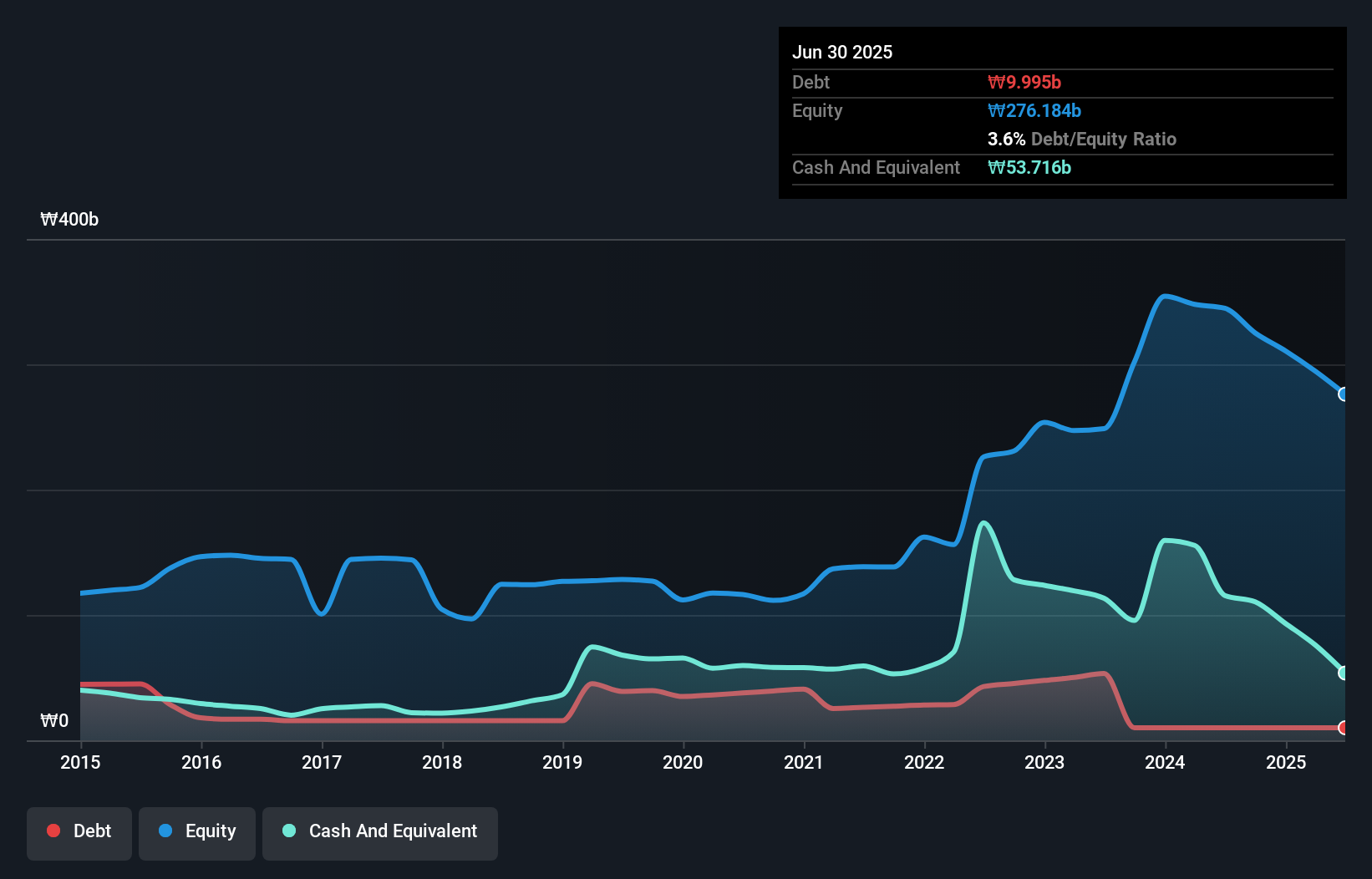- South Korea
- /
- Healthcare Services
- /
- KOSDAQ:A078160
Is MEDIPOST (KOSDAQ:078160) Weighed On By Its Debt Load?
Howard Marks put it nicely when he said that, rather than worrying about share price volatility, 'The possibility of permanent loss is the risk I worry about... and every practical investor I know worries about.' So it might be obvious that you need to consider debt, when you think about how risky any given stock is, because too much debt can sink a company. We note that MEDIPOST Co., Ltd. (KOSDAQ:078160) does have debt on its balance sheet. But the real question is whether this debt is making the company risky.
What Risk Does Debt Bring?
Debt and other liabilities become risky for a business when it cannot easily fulfill those obligations, either with free cash flow or by raising capital at an attractive price. Ultimately, if the company can't fulfill its legal obligations to repay debt, shareholders could walk away with nothing. While that is not too common, we often do see indebted companies permanently diluting shareholders because lenders force them to raise capital at a distressed price. By replacing dilution, though, debt can be an extremely good tool for businesses that need capital to invest in growth at high rates of return. The first step when considering a company's debt levels is to consider its cash and debt together.
What Is MEDIPOST's Net Debt?
The chart below, which you can click on for greater detail, shows that MEDIPOST had ₩9.99b in debt in June 2025; about the same as the year before. However, it does have ₩53.7b in cash offsetting this, leading to net cash of ₩43.7b.

How Healthy Is MEDIPOST's Balance Sheet?
According to the last reported balance sheet, MEDIPOST had liabilities of ₩34.0b due within 12 months, and liabilities of ₩76.6b due beyond 12 months. Offsetting this, it had ₩53.7b in cash and ₩13.7b in receivables that were due within 12 months. So its liabilities outweigh the sum of its cash and (near-term) receivables by ₩43.2b.
Of course, MEDIPOST has a market capitalization of ₩535.0b, so these liabilities are probably manageable. Having said that, it's clear that we should continue to monitor its balance sheet, lest it change for the worse. While it does have liabilities worth noting, MEDIPOST also has more cash than debt, so we're pretty confident it can manage its debt safely. The balance sheet is clearly the area to focus on when you are analysing debt. But you can't view debt in total isolation; since MEDIPOST will need earnings to service that debt. So if you're keen to discover more about its earnings, it might be worth checking out this graph of its long term earnings trend.
View our latest analysis for MEDIPOST
Over 12 months, MEDIPOST reported revenue of ₩72b, which is a gain of 3.1%, although it did not report any earnings before interest and tax. That rate of growth is a bit slow for our taste, but it takes all types to make a world.
So How Risky Is MEDIPOST?
By their very nature companies that are losing money are more risky than those with a long history of profitability. And we do note that MEDIPOST had an earnings before interest and tax (EBIT) loss, over the last year. Indeed, in that time it burnt through ₩54b of cash and made a loss of ₩99b. With only ₩43.7b on the balance sheet, it would appear that its going to need to raise capital again soon. Summing up, we're a little skeptical of this one, as it seems fairly risky in the absence of free cashflow. The balance sheet is clearly the area to focus on when you are analysing debt. But ultimately, every company can contain risks that exist outside of the balance sheet. To that end, you should learn about the 3 warning signs we've spotted with MEDIPOST (including 2 which are a bit concerning) .
At the end of the day, it's often better to focus on companies that are free from net debt. You can access our special list of such companies (all with a track record of profit growth). It's free.
New: Manage All Your Stock Portfolios in One Place
We've created the ultimate portfolio companion for stock investors, and it's free.
• Connect an unlimited number of Portfolios and see your total in one currency
• Be alerted to new Warning Signs or Risks via email or mobile
• Track the Fair Value of your stocks
Have feedback on this article? Concerned about the content? Get in touch with us directly. Alternatively, email editorial-team (at) simplywallst.com.
This article by Simply Wall St is general in nature. We provide commentary based on historical data and analyst forecasts only using an unbiased methodology and our articles are not intended to be financial advice. It does not constitute a recommendation to buy or sell any stock, and does not take account of your objectives, or your financial situation. We aim to bring you long-term focused analysis driven by fundamental data. Note that our analysis may not factor in the latest price-sensitive company announcements or qualitative material. Simply Wall St has no position in any stocks mentioned.
About KOSDAQ:A078160
MEDIPOST
Engages in the cord blood bank business in South Korea and internationally.
Adequate balance sheet with low risk.
Market Insights
Community Narratives



